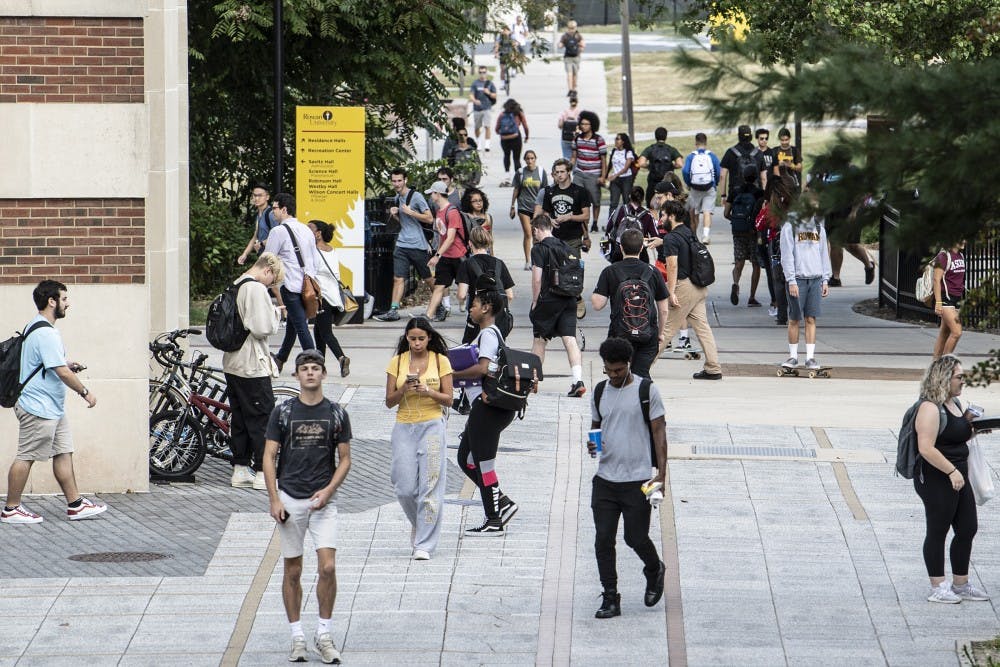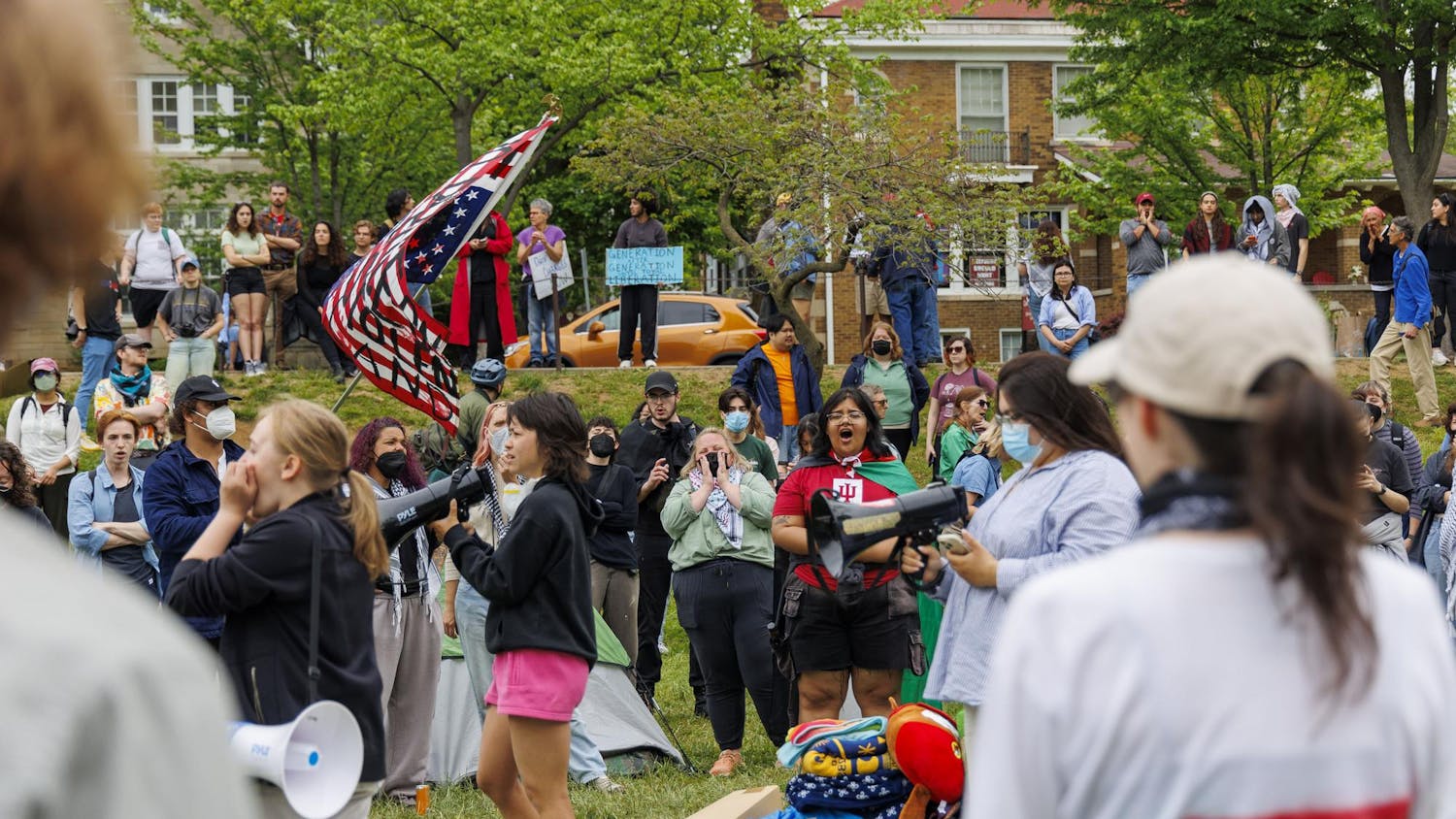By Susan Snyder
The Philadelphia Inquirer
PHILADELPHIA — At Bucknell University last spring, prospective admissions were tracking similar to last year through most of April.
Then, a few days shy of the May 1 deadline for students to accept an admission offer and pay a deposit, "the spigot just turned off," said Bucknell President John C. Bravman.
The university found itself short of its freshman enrollment target and turned to the prospective students it had put on a waiting list. Instead of admitting 35 students off that list, as it usually does, the selective liberal arts university in central Pennsylvania took about 100. And it still started the fall a dozen students below its target.
"This was not a unique situation," Bravman said at a Washington gathering of college presidents last month.
Some less selective colleges missed their targets by 25% or more this year, he said, and some elite schools went deeper into their wait lists.
The enrollment challenges come as the number of high school graduates nationally dips, more precipitously in the Northeast than in some other areas.
And by 2026, the country is likely to begin to see a bigger dip as a result of lower birthrates since the 2008 financial crisis.
Many colleges are trying to grow and carve niche markets.
"As we get more competitive because we have smaller pools, we can expect that institutions are going to compete more fiercely with each other," said Nathan Grawe, a professor of economics at Carleton College in Minnesota, whose 2018 book, "Demographics and the Demand for Higher Education," explored the issues.
Compounding challenges for many colleges is a decline in international students. Colleges also face more scrutiny over rising tuition costs and the worth of a degree.
"We (colleges) are being questioned as to our core values, our purpose, our efficacy, as well as our cost," said Bravman, of Bucknell, where tuition, fees, and room and board exceed $72,000.
Muhlenberg College in Allentown, Dickinson College in Carlisle and St. Joseph's University in Philadelphia were among schools in the region that missed their enrollment targets this year. Cabrini College in Radnor anticipates it will miss, too.
Delaware Valley University in Doylestown wouldn't say. Among those that would, some declined to be specific.
La Salle University said in August it met 91% of its goal, but did not release the number of students it enrolled or sought to enroll. Dickinson spokesperson Christine Baksi said the college was short of its "budgeted enrollment goal" and used its wait list, but declined to provide numbers.
There were difficulties elsewhere, too. In the Midwest, 10 of 28 colleges belonging to two regional associations failed to hit 70% of their freshman enrollment target this year, said Brian Rosenberg, president of Macalester College in Minnesota, speaking at the same event as Bucknell's Bravman.
"That is an existential-level problem," he said.
With costs at many largely tuition-dependent schools exceeding $50,000, enrolling fewer students means less revenue while salaries and benefits stay constant or rise.
Muhlenberg suspects it lost students to competitors who were more assertive with merit scholarships and financial awards.
The college aimed to enroll 570 students and got 538. A larger percentage of students than ever failed to show up after paying deposits in the spring, said Robert Springall, vice president for enrollment management.
"We had 69 students who made a commitment to Muhlenberg and who are not here this fall," Springall said. "In any given year, that number might be about half."
Springall wonders if some of those students were lured by schools, like Bucknell, that went deeper into their wait lists. Others, perhaps, wanted a cheaper option closer to home. "We were a little surprised to see that 10% of admitted students had considered a community college option," he said.
Bucknell suspects it lost students to cheaper public universities. Last year, four of the top six schools where Bucknell overlapped in enrollment offers were public.
Despite challenges, Bucknell remains an elite university, accepting about a third of applicants and maintaining an $851 million endowment. And part of the reason Bucknell missed its target is because it's trying to grow.
Ursinus College got its wake-up call a couple of years ago. In 2014, the Collegeville campus enrolled 1,643 students; last year, enrollment fell to 1,435.
"It forced us to really evaluate our strategies and what we were working toward as an institution and make some changes," said Shannon Zottola, vice president of enrollment management.
The college called on faculty, staff and parents to get involved in the admissions process, she said. Sixty% of faculty participated last year.
"People really knew that was not the right size for the institution and everybody wanted to assist any way they could," she said.
The college's parent leadership council also got involved. Parents of current Ursinus students or graduates hosted events for prospective students and parents in their homes around the country, Zottola said.
This year, enrollment rose to 1,500 and the quality of the class improved, she said. The ultimate goal is to reach 1,700.
"We're inching our way back toward that," Zottola said. "Everyone is just eager and ready to go for another cycle."
Scott Deacle, associate professor and chair of the business and economics department, reached out to prospective students at the admissions' office request. "I believe in our college and what it does, so I'm happy to pitch in," he said.
He hopes to host a Saturday session on campus in the spring for prospective students in economics and finance. The college last year held days for biology, chemistry, and history students, which proved successful. All 25 prospective students who attended the biology session ultimately enrolled.
Many local colleges have begun sending recruiters to new markets, west and south. Bucknell plans to hire an "on-the-ground" regional representative in Southern California. Rosemont College is concentrating on the Mid-Atlantic region, where it has stronger name recognition. Muhlenberg hired two off-campus regional admissions directors for the West Coast and the Southeast in August 2018.
"We have seen a 17% increase in applications from nine Southeastern states — with a 36% increase in applications from Florida alone — and the number of first-year students from these states has nearly doubled from fall 2018 to fall 2019," Springall said.
Schools also are seeking to attract more adult learners and graduate students.
Muhlenberg has applied to the Middle States Commission on Higher Education to begin offering graduate programs. Other colleges are seeking to expand theirs; Delaware Valley launched a master's in criminal justice this fall and between now and 2025 plans to add 13 more graduate programs.
Rosemont for the first time will host "instant decision days" at some high schools, where students present their scores and grades and can be accepted on the spot. It also is among a growing number of schools that have scrapped the standardized test score requirement for admission, hoping to attract more students from lower-income families.




